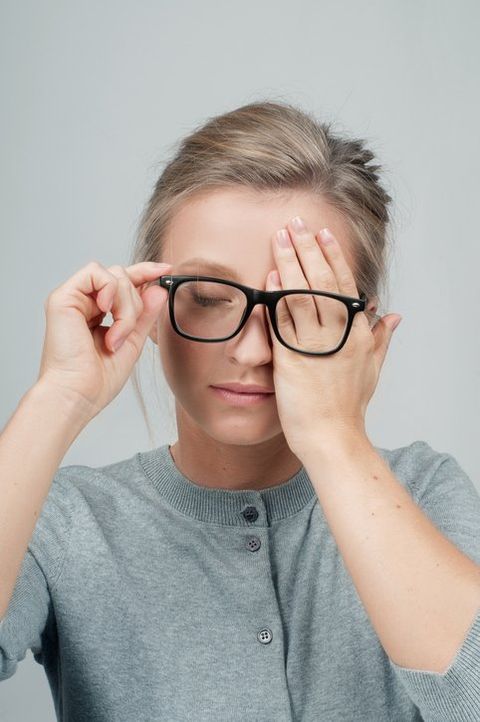Comprehensive Eye Examinations with Optometrist in San Antonio,TX
Dry Eyes and Ocular Allergies
Dry Eyes and Ocular Allergies
Many “San Antonians” battle both dry eyes and ocular allergies. Dry eyes and ocular allergies often give you that “foreign body” sensation and cause your eyes to become itchy, irritated and red. Dr. Arredondo will evaluate your eyes based on your reported symptoms and will also evaluate the front of your eye with a bio-microscope. She will then recommend a treatment plan for your dry eyes and / or ocular allergies. Regardless of the severity of the dry eyes or ocular allergies, Dr. Arredondo will make recommendations to you so your eyes can be more comfortable.
Dry Eye Disease and Treatment
Dry eye syndrome is a chronic condition that develops when your eyes do not produce and maintain enough tears to keep the eye’s surface properly lubricated. The effects can range from minor dryness and discomfort to pain, blurred vision and infections.
Symptoms of dry eye syndrome can vary depending on the severity of the condition but can include:
• Dry, gritty and/or itchy eyes
• Burning or stinging
• Irritation
• Watery eyes
• Blurred vision
• Pain
• Foreign body sensation
Ironically in an effort to fight off extreme dryness, dry eyes can often cause you to produce excessive tears, which is why some people experience watery eyes.
Causes of Dry Eye Disease
Dry eyes can occur naturally as a result of aging or hormonal changes, typically in women who are pregnant, taking oral contraceptives or going through menopause. It can also result from taking certain medications that reduce tear production such as antihistamines, blood pressure medications and antidepressants. Environmental factors can also play a role in drying out the eyes, especially where we live here in San Antonio. Excessive time spent staring at a computer or television screen can also dry out eyes and exacerbate symptoms due to the lack of blinking while staring at our screens.
Individuals that suffer from certain medical conditions such as diabetes or autoimmune diseases are more vulnerable to developing dry eyes. Other causes can be due to eye surgery including LASIK or extended contact lens use.
Treatment for Dry Eyes
There are many treatment options for dry eyes which are highly dependent upon the cause and severity of the condition. Many mild forms of dry eyes can be alleviated using artificial tears or lubricant eye drops to make up for the lack of natural tears usually produced by your eyes. If over-the-counter drops don’t alleviate your symptoms, Dr. Arredondo
might prescribe prescription drops that actually stimulate overall tear production. Since dry eye disease is often related to eyelid inflammation known as meibomianitis, Dr. Arredondo often addresses overall lid hygiene and health to improve dry eye. Finally, punctal plugs might be recommended for severe cases which would be inserted into the tear ducts to reduce the tear drainage in your eyes to keep them from drying out. Dr. Arredondo will continuously work with each of her patients to ensure that their eyes remain healthy and comfortable.
Eye Diseases Including Glaucoma, Cataracts and Diabetes
Unfortunately, diabetes is a disease that affects many different systems and areas of the body, including the eye. Diabetic retinopathy is a complication of diabetes and a leading cause of blindness. If you have diabetic retinopathy, at first you may notice no changes to your vision. But over time, diabetic retinopathy can get worse and cause vision loss. Ultimately, a person can go completely blind from it. Since diabetic retinopathy often has no early warning signs, diabetic patients should not wait for symptoms. Everyone, especially diabetics, should have a comprehensive dilated exam at least once a year. In fact, people with severe diabetic retinopathy can reduce their risk of blindness by 95 percent with timely treatment and appropriate follow-up care. If Dr. Arredondo discovers that you have advanced diabetic retinopathy, she will refer you to a retinal specialist for consultation and treatment. Her main goal is to preserve your sight!

Glaucoma is a disease that gradually destroys the eye’s optic nerve, which results in vision loss and blindness.
Glaucoma is a disease that gradually destroys the eye’s optic nerve, which results in vision loss and blindness.
Glaucoma is called the “silent thief of sight” because it unfortunately has no true symptoms until it is in its advanced stages and significant damage has occurred. As glaucoma remains untreated, people may miss objects to the sides and out of the corners of their eyes. Without treatment, people with glaucoma will slowly lose their peripheral vision. Dr. Arredondo
always checks for glaucoma in all of her patients during the comprehensive eye exam. A few patients with advanced forms of glaucoma will sometimes need laser treatments or other types of eye surgery. If this is the case, Dr. Arredondo will refer you to an experienced surgeon to receive the proper treatment.
Unfortunately, we are all destined to have cataracts at some point in our lives. Cataracts occur when the normally clear lens in our eye becomes cloudy. This clouding impairs vision by preventing the lens from properly focusing light on the retina at the back of the eye. Dr. Arredondo is well trained to diagnose cataracts in her patients and to manage their care. She also co-manages with eye surgeons who perform cataract surgery for her patients. Many of her patients have opened their eyes to a brand new world of sight after having their cataracts removed surgically.
These are a few of the insurance plans we are providers for:
We welcome new patients. Call or contact our office today to schedule your appointment.
Local optometrist office providing comprehensive eye examinations for patients from cities, towns, and suburbs near San Antonio, Texas.










